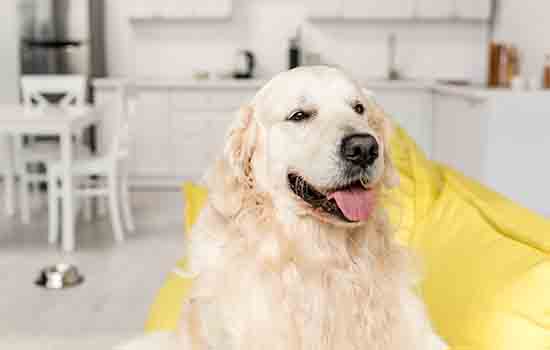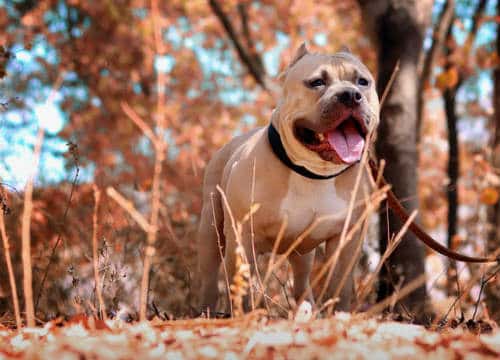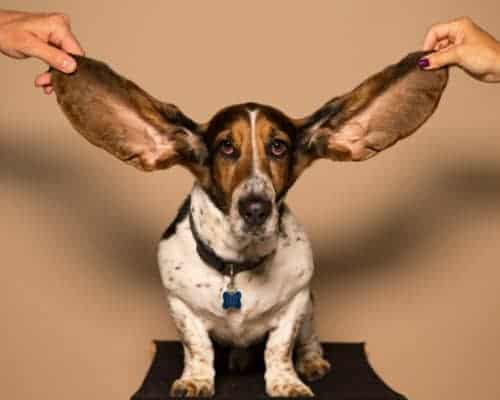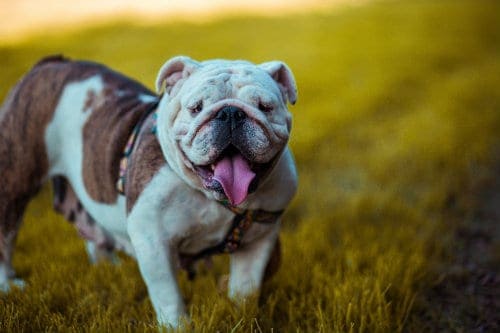What to Do When You Don’t Know
For some dog owners, this article may not be helpful. For those of us who have registered dogs, the determination of breed is a non-factor. However, most people do not worry a whole lot about bloodlines and breeding.
As such, there are many instances in which a dog owner doesn’t know what breed of dog they have. It is this type of dog owner who will find today’s lessons to be invaluable in determining the identity of your best friend.
Step One: Consult the Experts
There is a long and involved process that can be used to determine the breed of your dog. However, this process is often unnecessary. A simple consultation with an expert might be all that is needed to get the job done.
There are many possibilities for this step. You might begin by talking to your veterinarian. If you have just acquired a new dog, you need to take them to the vet anyway. While you’re there, see if your vet can give you some idea as to the breed.

Next, you might try talking to someone from one of the various kennel clubs. Groups like the AKC (American Kennel Club), CKC (Continental Kennel Club), or UKC (United Kennel Club) are really the top authorities on this matter.
These clubs have some of the world’s leading dog experts, and the identification of specific breeds is their specialty. The main thing that these kennel clubs do is to verify the bloodline and breed of any dog presented to them.
If you have some idea of your dogs’ breed, but you aren’t sure, you should pay a visit to a breeder. For instance, if you think your dog is a German Shepherd, but you need confirmation, seek out a breeder of German Shepherds.
Dog breeders tend to be very familiar with their chosen breed. As a result of working with that breed every day, breeders will be able to notice the small differences that the average person would miss.
If no one can help you identify the exact breed of your dog, you will need to do your evaluation and make your best judgment. This is where we can see the importance of good internet research. Many organizations provide online databases of recognized breeds.
It’s worth a little bit of your time to look through the pictures and look for one that matches your dog. As you go, make a list of “possibles.” This list should include any breed that might match your dog. Use the following steps to narrow it down further.
Step Two: Look at the Shape of Your Dogs’ Head
The shape of a dogs’ skull can tell you quite a bit about what breed it might be. This will help you to cross some of the “possibles” from your list. As you go, strike off any breed that does not match your dog.

There are three basic skull shapes for dogs. All breeds have one of these three basic types. The first is the long skull. If you want a perfect example of this skull type, look at a wolf. A German Shepherd is also a good example.
This skull type is long, thin, and tapering. Collies are another great example of a dog with a long skull. Afghan hounds and Dachshunds also have this type. It is easy to recognize this skull type from head shape alone.
Next is the wide skull. The perfect example of this would be a Pit Bull or a Boxer. Mastiffs and Rottweilers also have this type. When you see a dog with a head like a boulder, it probably belongs to this group.
Finally, there is the medium-sized skull. This one is a little harder to recognize because it is a middle-ground between the long skull and the wide skull. Labradors, Beagles, and Dalmatians all possess this type of skull.
Once you have figured out which kind of skull your dog has, you can cross off every dog on the list that doesn’t have a similarly-shaped skull.
Step Three: Look at Your Dogs’ Ears
These are also very important for breed identification. As with skulls, the ears of all dogs fall into three general categories. As before, you can use this factor to knock a few candidates from your list.
The first one is the erect ear. This is seen in dogs like the German Shepherd, Malinois, Samoyed, Huskies, Malamutes, and other dogs who look like wolves. Many people like the look of these ears, as they make a dog look lively and alert.
This ear type stands straight up with no bending. However, you should be aware that there is a surgical procedure that can make floppy ears into erect ears. As this is a purely cosmetic procedure, it is not very commonly performed.
The next ear type is the floppy ear. Good examples of this ear type would include a purebred Beagle, Dachshund or Bloodhound.
There is some variation in the floppy ear. While some dogs, like Beagles, have ears that drop down to about the level of their chin, some others like Bloodhounds have ears that can literally drag on the ground.
Breeds with these extra-long floppy ears are made for tracking purposes. They are uniquely suited for this purpose, as their ears are naturally close to the ground at all times.

Finally, we have cocked ears. These could also be described as semi-erect ears. Collies and most Sheepdogs would be good examples of dogs with this ear type. The ear stands up, but not like the ear of a Wolf. The ear can bend toward the tip and fold.
Many Bulldogs possess these types of ears. Unfortunately, there are some people who choose to crop their Bulldogs’ ears, making it impossible to use them for identification purposes.
You probably know what to do next. Grab your list and look over it one more time. Cross off any dog whose ears do not match those of the dog you seek to identify.
Step Four: Consider Color, Texture, and Build
These are what I call “the three subtle criteria.” Color, fur texture, and body build are not the surest of tells, but they’re still very helpful. I say that they are not the surest because all three of these things can be subject to some variation.
Let’s start with color. Most breeds come in more than one color, so it’s important to understand that. Even dogs that are more or less uniform will have occasional color variations. For example, let’s consider the Alaskan Malamute.
The Malamute is normally white and black. Although the proportions vary, the majority of Malamutes will look alike in terms of color. However, you will occasionally see a red-haired individual. The same is true of the Siberian Huskie.
Hair texture is one thing that often does not vary too much. Unfortunately, this quality is a little harder to research because it is based on touch, a sense that doesn’t always translate well into text-based explanations.
As a general rule, understand that some dogs have a smooth coat and some dogs have a coarse coat. Of course, differences in hair length must also be considered. Many breeds will often have distinctive tufts of extra hair in certain places.
One example of this is the Bedlington Terrier. This dog is one of the strangest in the world, so you would probably know if you had one of these. If you did somehow stumble upon one of these dogs by accident, they could be identified by the tassel-like tufts of hair on the end of their ears.
The dogs’ build is another thing to consider. This is a factor that can vary considerably under different circumstances. Dogs with a poor diet and a poor exercise regimen are unlikely to attain the kind of girth and muscle that a well-maintained specimen would have.

That being said, your dog should take on its natural build after some time. All you have to do is make sure to feed them the right amount, and their biology will handle the rest. After this, you can do a better job of evaluating their build.
Some dogs have a barrel-chested build, like an English Bulldog, which may be the world’s best example of this body type. Other dogs are tall and lean like Greyhounds. Then, of course, you have all the various Terriers, most of whom share a similar body type.
These three lesser factors should allow you to cross a few more names from your list. Be careful with this one, though, since these criteria are not quite as reliable as the others.
Step Five: Consider Your Dogs’ Behavioral Traits
Every dog on this planet was bred for a specific purpose. In many cases, they are no longer used for their original purpose, but the behavioral tendencies of their ancient past are probably still with them.

Once you have narrowed down your list to a handful of candidates, behavior can be used to make the final determination. The only downside here is that you may have to become more familiar with the dog before you see those telltale behaviors come forth.
One thing to look for is their interactions with other animals. There are a large number of dogs that were bred for hunting, and these kinds of dogs tend to be a little more aggressive towards other animals.
In particular, hunting breeds have a natural love for the chase. They love to chase anything that will run, and this behavior is easy to trigger. Just let them chase you a tiny bit while you play in the yard and see how they react.
Breeds that were created either for ornamentation or comfort will tend to be a little less active since their breed history would have required much less effort when compared to a hunting dog or a working dog.
Staffordshire Terriers were created to fight bears. This is why they still retain a little more aggression towards other animals. In addition, they will take to rough play readily, and will naturally protect the pack from any perceived threat.
We could literally go on all day and for many pages in this way. Every breed has distinctive qualities that set it apart from all the other breeds. There are very few breeds that do not possess unique and distinctive behaviors.
If you need a little more background information about a specific breed, you should try to contact a breeder who specializes in that particular kind of dog. They will usually be happy to tell you about the history of the breed and its’ common behaviors.
If the breeder cannot point to specific behavioral traits that will help you to identify your dog, it’s likely the breeder isn’t knowledgeable. Bear in mind that becoming a dog breeder is not a difficult thing to do, and not all are equal.
Do You Have a Mutt?
If you have gone through all of these measures step-by-step and you still haven’t managed to identify your dog, it is likely that you have a mutt. This is not a bad thing, as mutts can often make great dogs.
It does mean that you won’t be able to get papers on your dog and that you won’t be able to make any money by breeding them. However, this is only important for breeders. Most people do not need to care about such considerations.
Conclusion: Only a DNA Test Will Tell for Sure
There is a serious option if you really want to be sure. Most vets will perform a DNA test that can identify your dogs’ breed in a way that is reliable and exact. If the dog is a mutt, you will at least know what kind of mutt you have!
We hope that this guide has been useful, and that is has allowed you to identify your dog with minimal time and effort. If not, we hope you will be happy with your dog anyway. After all, your dogs’ breed isn’t the most important thing in the world.
